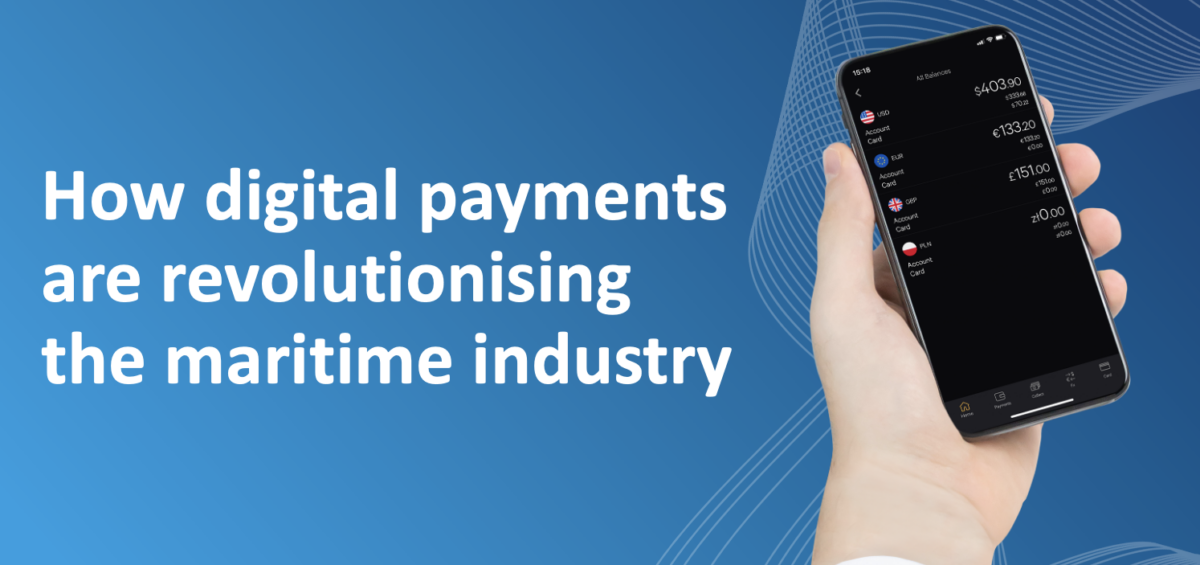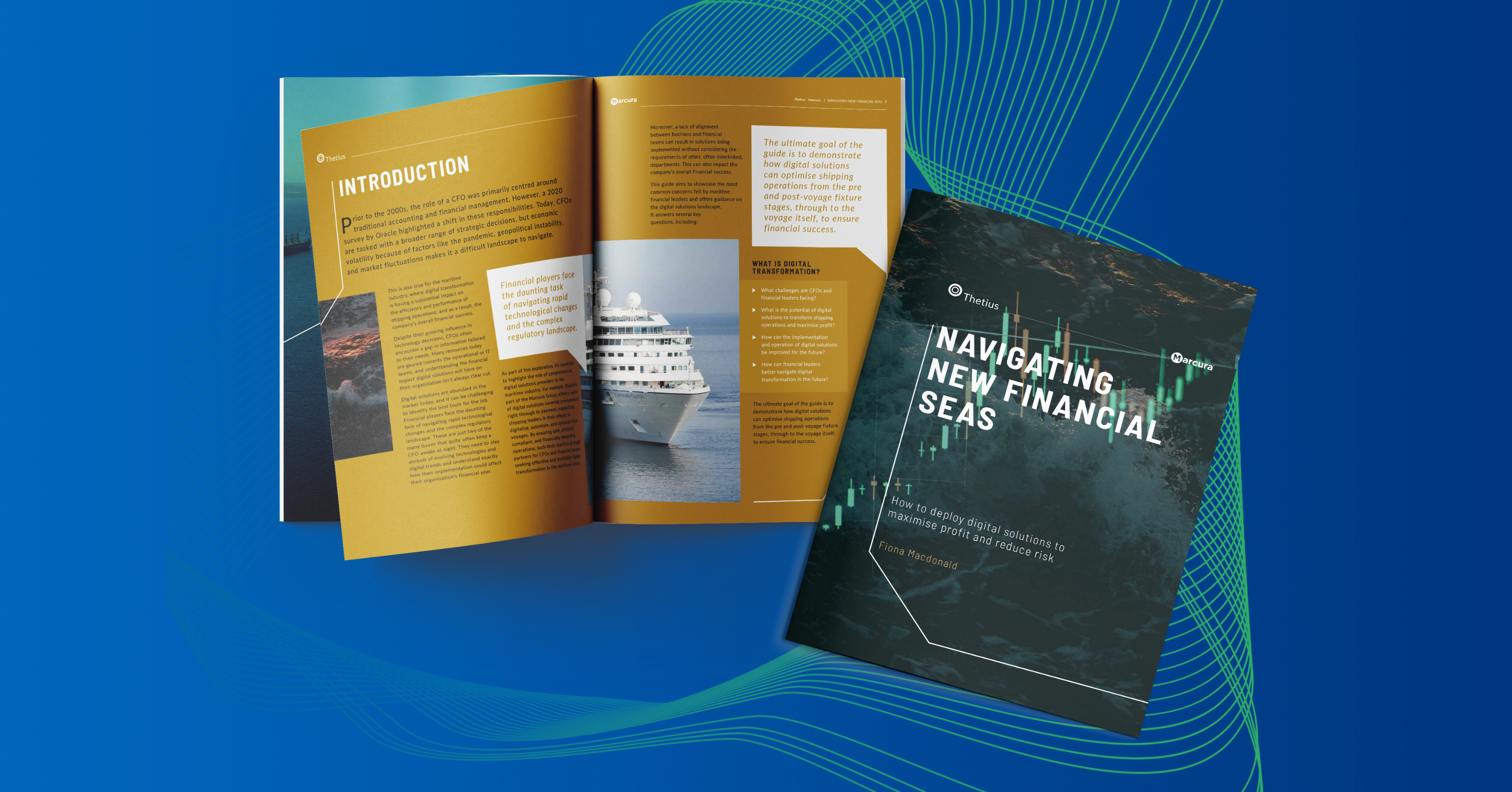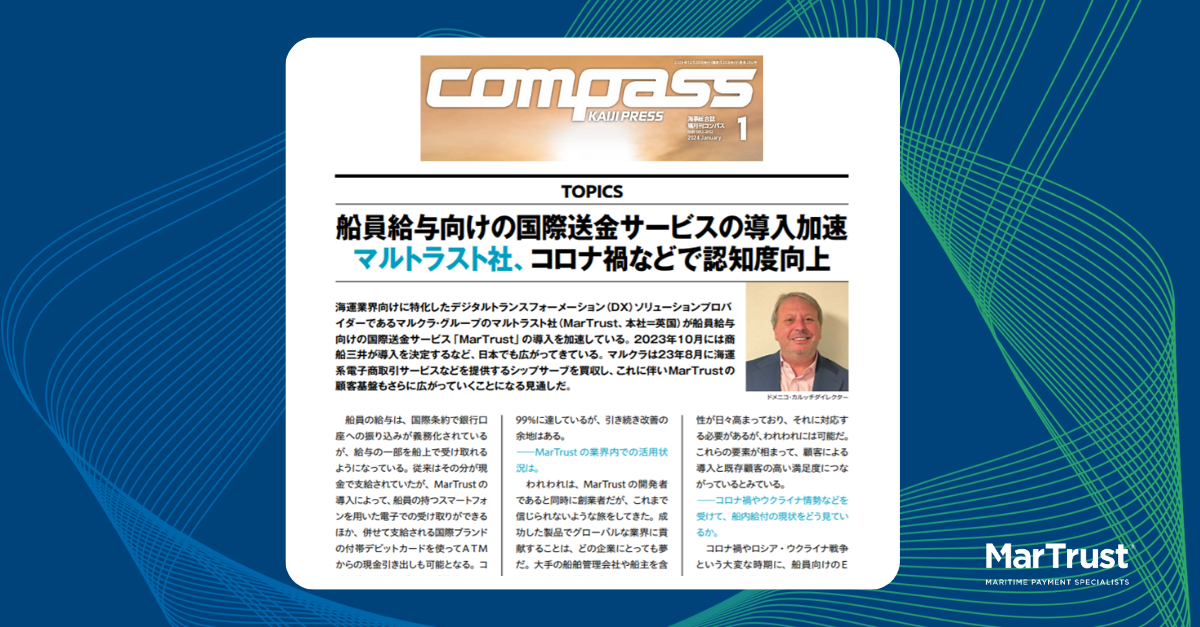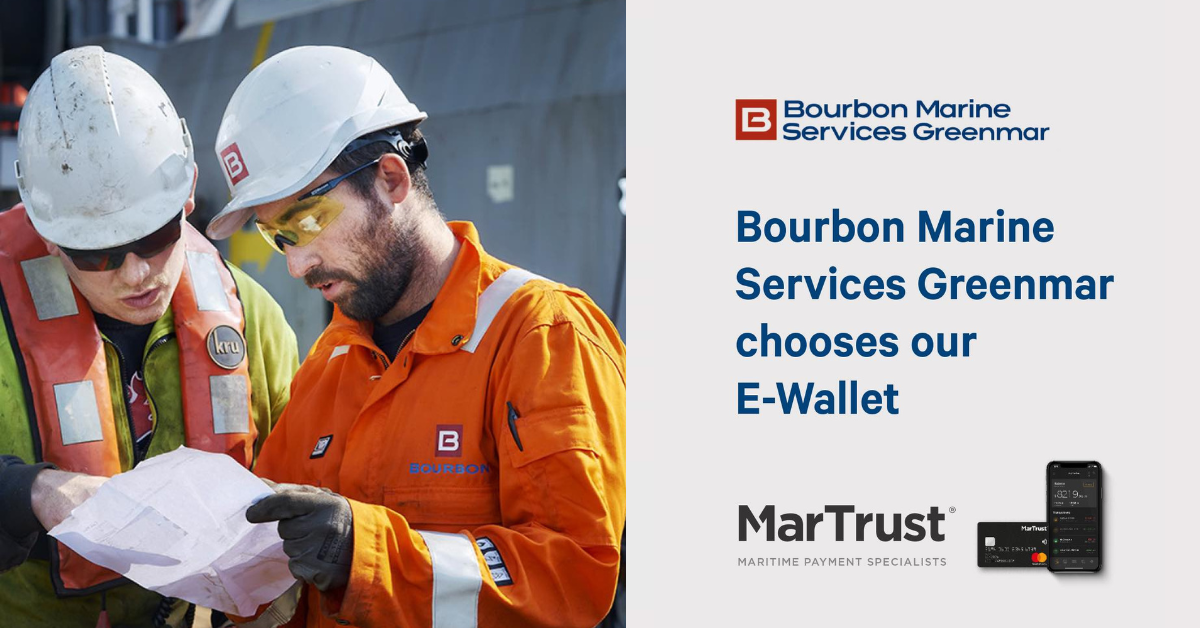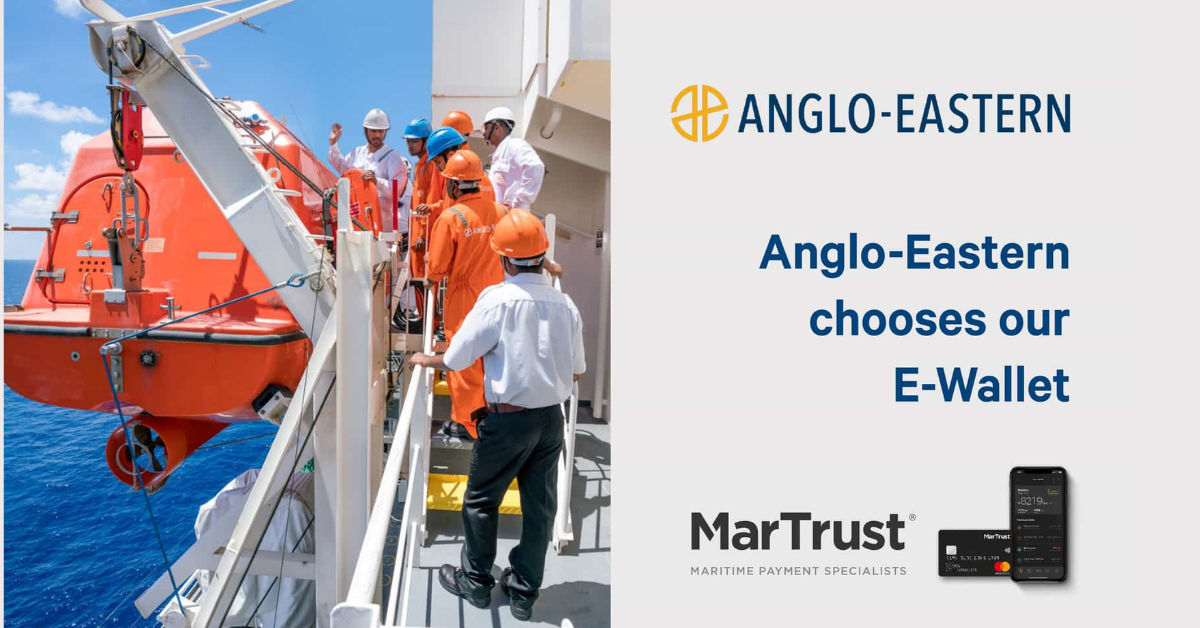In the maritime industry, we often focus on tools and processes when discussing payments. This makes sense as the industry is undergoing significant technological changes.
However, we tend to overlook an important aspect – the people we pay.
“The wages I send home keep my family alive, so I have to be happy with that.” – Seafarer response, The Seafarers Happiness Index
When we think about the current skills shortage our industry faces, particularly the need to retain existing skilled workers, payment processes suddenly become much more than simply moving money from one place to another.
Payments that go wrong can profoundly impact crew morale and welfare.
How things can go wrong
Taken at face value, paying a crew member is straightforward.
Deductions are made for onboard disbursements; the remaining salary is wired to a bank account.
Once we begin to scale that process, it’s easy to understand how errors and delays can quickly arise.
Imagine the possible issues with just 20 crew members.
- Payments failing due to incorrect beneficiary details
- Calculating all onboard deductibles, as well as any bonuses/overtime
- Changes made to destination banks (particularly prevalent in sanctioned territories)
- Any updates needed to the percentage of salary a seafarer sends home
It all adds up to a drain on onshore teams and Captains, who have better and more profitable ways to spend their time.
The advantages of digital payments and cashless vessels
Fortunately, there is a solution.
A robust digital payments solution can overcome many of these challenges for shipping companies and their crews.
Advantages for crew members
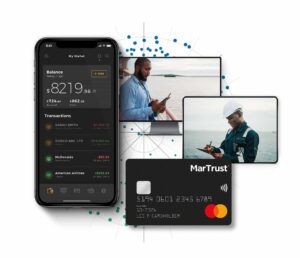
- Transferring funds to an E-Wallet means instant updates that account for salary, bonuses, overtime and cash advances
- Crew suddenly have a complete overview of their current salary and complete control over funds
- Sending money home becomes simple and efficient, often with better exchange rates and lower transfer fees
- Up-to-the-final-minute compliance checks ensure that unexpected regulatory issues don’t tie up their transfers
In addition, the crew no longer need to worry about storing or transporting large amounts of cash and can still easily access money from ATMs worldwide.
Using MarTrust means your crew members get paid on time and have total control over their money, maintaining the morale and welfare of your crew.
Advantages for shipping companies
At a business level, these advantages scale quickly.
The savings available to a vessel that does not have to arrange for large amounts of cash to be transported by an agent are easy to understand.
Considering the broader impact this could have on your overall working capital is equally essential. How much money do you currently have locked up onboard vessels?
MarTrust also provides industry-standard transfer security, backed by leading global financial institutions.
This reduces pressure on your onshore teams and provides you with increased confidence and an improved audit trail. Your cross-border payments are made safely and efficiently through a single access point, potentially saving transaction costs and improving FX rates.
Finally, your onshore teams and Captains see reduced time spent dealing with minor issues and attending to every financial transaction, freeing them up to concentrate on more important business.
Case study: Seatrade 
We recently discussed these issues with Richard Tiggelaar, Team Leader – Accounting at Seatrade. He told us about the advantages seen by Seatrade’s crew and the business as a whole:
“Seafarers requested allotments every month. The allotments differ every month. Sometimes the bank accounts from the seafarer differed. We were spending a lot of time creating the payments for the wages every month. [With MarTrust] the workloads reduced a lot.
“There is still some communication but more between MarTrust and us then between us and the seafarer. The seafarers set up their own apps the way they want it.
“With Cash-To-Master deliveries on board, there are huge bank charges. For our company about $100,000 USD per year for bank charges and delivery.
“If the cash is reduced, there are a lot of savings. We also have a lot of vessels sailing in West Africa, and their safety is a big issue. [It’s better] to not have too much cash on board.
“ I think it brings home a little closer to the seafarer when he is out on the sea. If a wife of a seafarer needs some money urgently or whatever, that is done within seconds. The money is then within seconds on the cards of the partner of the seafarer.
“So for the Seafarer, it brings home a little closer to him.
“For the company, we have better cash flow control and save time. That’s the main reason for doing this.
“Remitting wages is not your core business as a shipping company, so you can bring business back where it belongs.”
Key considerations for implementing cashless vessels
With such clear advantages, you might wonder why the industry is lagging in digitisation efforts.
The answer can be complicated. The maritime industry has processes and ways of carrying out tasks which are often influenced by complexities and challenges unique to the industry. However, the sector is rapidly evolving, and the rate of change is accelerating.
Whenever digital wallets are introduced, feedback from seafarers is almost universally positive, but – much as we may like to pretend it isn’t the case – there’s no denying that change can be a challenge.
Fortunately, this is a manageable problem, and working closely with crew and managers is critical.
Adoption of any new technology may require some persuasion. Still, it critically relies on your approach to enablement (In fact, poor onboarding is the most common reason for failure in digital transformation projects).
Typically, companies moving towards cashless vessels take one of two approaches – either a top-down mandate that technology must be used or by trial with a small group to gather feedback.
In both cases, clear communication is vital.
At MarTrust, we understand that successful adoption often means ongoing education around the key benefits and features for seafarers.
There are myriad reasons why a crewmember may prefer cash. It may be ‘what they are used to’ or there may even be a cultural bias at work.
We offer ongoing support, with a dedicated team devoted to answering questions and enquiries alongside various video and training content.
In addition, MarTrust features are designed in partnership with our customers to make them fully user-friendly.
For example, crew can simply ‘set and forget’ their wallet to send 100% of their salary home each month. Should their needs change, this can be altered with a few quick clicks in their app.
Similarly, we ensure we answer critical business questions at every stage – from integration to training, system requirements to communications.
As a business, adopting a new payment system means you need to ensure there will be no disruption to ongoing payment schedules. As a market leader, we can guide you confidently and successfully through the process.
While still unevenly distributed, there’s no denying that the cashless vessel revolution is well underway.
For businesses, now is the best time to embrace digital payment systems and begin the journey towards improved crew welfare, streamlined processes, and cost savings at scale.
—
For more information, contact us today by clicking the REQUEST DEMO button at the top of the page

